Diary of a Time-Traveling Composer: Interview with Alan Silvestri
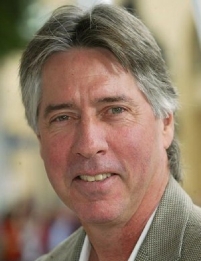 Alan Silvestri talks with Colonne Sonore about his intense 2009: three new movies and the release of the much-awaited score for Back to the Future.
Alan Silvestri talks with Colonne Sonore about his intense 2009: three new movies and the release of the much-awaited score for Back to the Future.
Last year has been a generally very intense one for Alan Silvestri. Three new feature films, Night at the Museum: Battle of the Smithsonian, G.I. Joe: The Rise of Cobra and A Christmas Carol, and each has received a score publication. Additionally, his music was further under the spotlight thanks to specialty soundtrack label Intrada, which during the year released two of his ’80 scores: Delta Force and the long-awaited, most sought-after complete score of Back to the Future. It's been a year continuously ranging from past to present.
ColonneSonore: Let’s start talking about the past, and what a past: the much awaited release of the Back to the Future score through Intrada. How did it happen? I remember that in our first interview, back in 2004, you said to me that you started to be a little skeptic about it…
Alan Silvestri: Pretty much always you work on a film and as a matter of course you release a soundtrack album. And of course that always has financial implications, up to whether or not a record company feels it would make good business to release a soundtrack album. Sometimes it does, sometimes it doesn’t. The most fun about the Back to the Future release was that it really was the result of people requesting, over a long period of time, that that album be released. So it was from the people’s request, people who listen to film music, rather than coming from me or the record company. It was a very limited release, but it was a direct request of the people who loved the movie and it was good to have that kind of interest coming from them.
CS: How were you involved in the disc preparation? And how was it to return on such a milestone and important work for you?
AS: Certainly I had input and I was part of it but the record company and the people working on that really made that all happen. It’s like everything else, it’s always a combination of elements. It’s been said before but it was very much like visiting an old friend. It’s actually one of the fun aspects of the few concerts I’ve done - and you know that I don’t walk out on the stage very often. But the couple of times I’ve done it, in Spain and also for the American Youth Symphony at the Dorothy Chandler Pavilion, it was a chance to hear that material again and it’s always very interesting, it’s like looking through your photo-album. It was interesting especially with the AYS, because there were young musicians that were playing the music that their moms and dads had originally played when the movie was done. So it was truly very fond memories for me, working with Bob Zemeckis and being there for the all success of that film. So it was fun to revisit it.
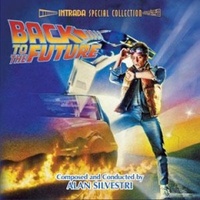 CS: With the Back to the Future score now released, what is your wish-list of unpublished score of yours that you would like to see on CD?
CS: With the Back to the Future score now released, what is your wish-list of unpublished score of yours that you would like to see on CD?
AS: I haven’t really even thought of it like that, so I really don’t have a wish-list. As I said earlier the thing I liked about the BTTF release was that it didn’t came from me, it came from the record company seeing a demand and having this request. My wish-list would be that any other score of mine that hasn’t been released would be requested in the same way. That would be fun.
CS: Let‘s travel to present. Night at the Museum 2 was your first outing last year, coming back to the melodic materials you had written for the successful first movie. This is the 6th sequel for which you compose a score after having written the first episode, along with Back to the Future, Predator, Father of the Bride, Grumpy Old Men and Stuart Little. And as always you demonstrate a great ability and versatility in adjusting and adapting original material to the new filmic situations and narratives: it always fits perfectly both in terms of musical quality and semantic reinforcement to the images. The main title sequence of this new film stands as a perfect example. Did you develop over the years a method in approaching this kind of project, particularly during conceptualizing?
AS: One of the fun parts about that sequel situation is when you do the movie originally, you’re in a sense corresponding with the film and you’re developing material for very specific places. What happens in sequels very often, which is fun, is that you get a chance to explore how a piece of music could potentially work in a very different kind of scene - or be used in a different way. The other interesting part is that you get a chance to take thematic fragments from the theme and start to further develop them in new ways. So it’s always a very interesting process, in some ways things about it are easier because you have something to start with, but of course, in other ways, it’s more challenging because you have to find ways to keep the material fresh and corresponding to the new situations. It’s a very unique kind of situation to find yourself in as a composer.
CS: Being a very situational plot, I think the score resulted in a more episodic divertissement rich of brief and composite musical sketches. Does it represent a much more difficult work in terms of composing and synchronization?
AS: I wouldn’t say that it was more difficult. For me I always had to walk through the film as it works, bit by bit, and look for what’s appropriate. So if for instance a situation is there where things are more fragmented that represents an opportunity to make the music more fragmented, which in some instances is the correct choice, or in other instances, in a sense, play with more than overview to somehow try to connect things a little more clearly. So I find you always have to pay attention to the film moment by moment and that’s always the same job and the same challenge.
CS: Does a piece of the temp-track survive in the final cut of the movie during the last battle sequence?
AS: It’s interesting. Sometimes that situation will arrive when the composer writes something and for whatever reason the director doesn’t feel that it works as well as what they have in their temp. That was not the case here. That was something that the director has put in the film before I even saw the film. And he actually played that music on the set when they shot that scene. So when it came time to spot the movie and work on the film there was never even any talk of me scoring that sequence. He wanted to use it. So I never wrote any music. That was something the director wanted, he said: “Don’t even write something because I want to use this”. It wasn’t like I tried to write something and he said: “No, I like the temp better”. It wasn’t that all. He actually designed that sequence around that piece of music and that’s what he wanted.
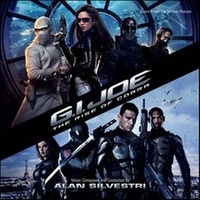 CS: Just after came G.I. Joe: The Rise of Cobra. Your collaboration with Stephen Sommers is faster rising among the most sought-after in the Hollywood mainstream. Have you articulated a standard method of work? Did you start to work at the score in large advance as you usually do with Zemeckis?
CS: Just after came G.I. Joe: The Rise of Cobra. Your collaboration with Stephen Sommers is faster rising among the most sought-after in the Hollywood mainstream. Have you articulated a standard method of work? Did you start to work at the score in large advance as you usually do with Zemeckis?
AS: Yes, I do in a sense because, very much like working with Bob, Steve doesn’t wait till the very end to hire me or hire a composer. So I know in very advance that the film is going to be made, I will usually hear that even before he starts shooting so I have the chance to be around the process all the way through. This makes a tremendous difference in the creative contact between the composer and the director.
CS: This is a very razor-edge, propulsive and sharp score, another example of your distinctive instinct and craftsmanship as an action scoring composer. You’re still at your comfort with such kind of writing or now, 20 years after Predator and a lot of similar action-packed movies, does it starts to became a little difficult to produce always new and original material?
AS: It’s a complicated question. If, as an example, I use my voice to speak to you I try to listen to what you say and listen to your questions. I try to respond to what it is you need right now in this moment, but that thing said is still my voice. It’s still the way I put words together, it’s still the way I think about what comes to me from the outside. So in writing scores, writing a particular genre of score, it’s very similar. I’m trying to give the film what it needs moment by moment, but beyond it all it’s still the way I perceive music, still my musical voices is there. So yes, I do try to bring freshness, I do try to bring new perspectives but whatever I write it’s me writing, so is there gonna be a stamp of my style and my perception there.
CS: I found the integration of electronic and orchestra the most functional aspect of the score, one that really corroborates the high-tech style of the picture. Can you explain, technically, how do you work for similar cues: do you came to the scoring session with the electronics pre-recorded or you still have synthesizers and keyboards playing live with the orchestra as you did in the 80‘s?
AS: It’s interesting, there were no performances on the soundstage by player on the electronic aspects. It was all pre-programmed. But what I like to do is: I like to bring all of the electronic program into the scoring-stage, in its programmed form, not in its audio form. So for instance, in a given cue, I might have 60 tracks of electronic elements. I like to have the electronic sequencers playing in a sense live with the orchestra. So if I decide I want to make some kind of change in the orchestra, if the director wants to make a changing in the timing of something in the cue, I haven’t committed all of this electronics elements to audio-files, they are still - in a sense - being performed in a real time. That’s given me a tremendous amount of flexibility when I’m on the scoring stage.
CS: Some voices circulated before the release of G.I. Joe about some editing adjustments and postproduction difficulties between Sommers and the studio. Apart from the gossip, listening to your score I had the sensation that anyway some changes occurred during the making. I was particularly puzzled by the omission of your original, robust end titles cue, also because - as heard on the album - it presents a B-section of the main theme practically never heard in this version throughout the movie. This let me guess about a progressive reworking of your original idea of the score…
The theme presented in the way you speak about it has a very kind of montage sensibility to it and it’s the kind of things that sometimes doesn’t travel very easily throughout the body of the film. When I did the end credit for the film that was the condition of the film at the time, the song at the end wasn’t there when I was working on the movie. When I was working on the movie this instrumental version of the theme was gonna be the end credit. As a matter of fact that film, because all of the special effects, was constantly being changed and cut: every time I did a cue we knew that somehow it was going to have to be edited later in order to fit the sequences, because the editorial process was constantly going on right up until the very end. So it was one of those situations where the filmmakers didn’t have anything at the end of the film and asked me to write something - which I did - but then they wind up not using it at the very last minute. I didn’t even know that, I saw it at the end of the film.
CS: Did the scoring of Night at the Museum 2, G.I. Joe and A Christmas Carol ever merged during the year?
AS: They really didn’t. There were things, dance sequences etc. on A Christmas Carol that I had to do very early on because they were needed for shooting (motion capture): they were literally done a year before Night at the Museum 2 was begun. As tight as the schedule was I managed to avoid having to work on two things at the same time. It was interesting because the schedule on G.I. Joe shifted, drastically actually. I was originally supposed to record the score before Christmas. In fact, when we got to the end of January I actually had to leave the film and go on to Night 2. At this point the last 30 minutes of the film were not yet ready to be scored. It then began (and completed) Night at the Museum 2. I was then brought back to finish the remaining 25 minutes of score for G.I. Joe and finish it in May. I was then able to begin work on Christmas Carol with a very comfortable, if not luxurious, amount of writing time. I find it difficult to write on two different things at the same time and go to great lengths to avoid being in that position.
CS: In our last interview about Beowulf, you told me you were going to change the working process for A Christmas Carol, assuring yourself to have the possibility to watch the movie in a more refined version before completing the score. Did it finally happen? Did you have the possibility to screen the movie in 3D before ending the score?
AS: No. It was a nice dream I had when we last talked but it’s not somehow how it works in the real world. It’s just the nature of motion capture and, in a sense, is very often the nature of animation also: you can’t wait as long as you would like to wait in order to begin, because you never have enough time to finish. So you have to start working on a film that’s not finished, it’s just part of the process. We were all aware of the difficulties of having a composer that had to start working on a film that wasn’t finished - and maybe that is one thing that we carried over from Beowulf. For instance, in my interaction with Bob, he was more aware, trying to fill in the blank for me about what was going to happened in the scene; trying to give me as much information as possible. But still the process is such that you just have to begin earlier than you would like. And of course, while working on the film, I had seen nothing in 3D at all. But the timing of everything was locked and that at least is something that helps. I might not see the snow coming down, but what I’m writing is exactly the right length. The length changes very very little after the score is completely finished. It’s not as bad as it sounds, but it’s of course not ideal.
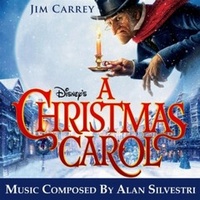 CS: The score, that is a full-blown symphonic, quasi-operatic delightful job, is deeply based on the festive carols. After all, “Carol” is in the title of the story, so I found it a very precise approach. Did you originate(d) this approach from the beginning? It was chosen in collaboration with Zemeckis?
CS: The score, that is a full-blown symphonic, quasi-operatic delightful job, is deeply based on the festive carols. After all, “Carol” is in the title of the story, so I found it a very precise approach. Did you originate(d) this approach from the beginning? It was chosen in collaboration with Zemeckis?
AS: Yes, it absolutely was. It’s an aspect of the film that he really enjoyed and very much it was the case also in The Polar Express. There’s something about the familiarity and the nostalgia with this original, famous Christmas carols and so Bob had a very specific ideas in mind about all of that. It was also part of the overall challenge, especially in coming up with a theme and a song for the movie: to have something that could live in the company of these most, most famous and loved carols and not be out of place, to the point where I can go from the original theme into “Joy to the World” and you don’t hopefully feel some kind of shock.
CS: How did you select the carols to include in the score? "Jingle Bells", which was part of your The Polar Express score for instance, it's not present in this work: is there a particular reason?
AS: Bob specifically only wanted to use classic Christmas songs that existed at the time of the film. They actually had somebody research all of this material and Bob just felt that would be important to the feel of the movie. Jingle Bells, although is a classic Christmas song, wouldn’t be in that category and so it wasn’t even a thought that we would use something like that.
CS: How did Andrea Bocelli become involved in the project?
AS: It was one of those magical events. Glen [Ballard] and I originally wrote a different song, we had played it for Bob and he liked it very much, but he felt that it somehow didn’t have the gravity that he was looking for. So we wrote a completely different song, which became “God Bless Us Everyone”. But now the clock is ticking, we’re all kind of running out of time. And it happened very quickly: Andrea’s management people had coincidentally contacted my agents, Gorfaine and Schwartz, expressing an interest in them helping to find a film project for Andrea. We also discovered that Andrea was in the middle of preparing his first Christmas album. All these things were floating around at the same time so the deal was made very quickly, the preparation of the track, the trip to Italy. It was an amazing opportunity for all of us because of all these forces coming together.
CS: How did you work with him? Did you arrived at his studio, in Tuscany, with a complete recording of the orchestra/choir tracks or it was just a mock-up?
AS: We did it in a couple of stages. We had an original demo of the song which was what we first sent to Andrea, to see if he would have some interest in singing. We received a very quick and positive response from him. The next step was to put together the ultimate setting of the song and at that point I turned to my dear friend and collaborator William Ross, who did this most magnificent arrangement. Then we had that arrangement in a kind of mock-up simulated form. A singer came in and actually sung two new arrangement. We sent that off to Andrea and it was all happening very fast: I think he maybe had it 3 or 4 days before I arrived in Italy. We then did go into the studio and we recorded the final orchestral version of the arrangement. We also had the choir, that was singing in Abbey Road in London and we did that remotely - we monitored them in Fox Studios in the States. So when we went to Andrea’s studio in Forte dei Marmi we had the finished, even if unmixed, orchestral track and the choir.
CS: Times are changing significantly for what concerns soundtracks publication. Just some months ago one of your first orchestral score was finally released on a double CD and A Christmas Carol, your latest work, received only a digital-download edition. While I think this is still better than having no score album at all (as happened for The Polar Express) I still think that such a score should deserve a physical, pressed CD that could represent the quality of your music in a lossless format better than an mp3, lossy compression. It’s also strange that Disney started this policy of issuing score albums only in digital with the exception of soundtracks containing songs (like Randy Newman‘s The Princess and the Frog), and your score, that features Andrea Bocelli, remained in mp3. What’s your opinion about it?
AS: I think we always have to remember so many of these decisions are driven by business considerations. If there weren’t business considerations there would be no movie, there would be no score. All of this is so expensive to produce to do, so while I agree I would prefer to not have just the digital-download, I’m not the one that has to pay for it. And one never knows: as you say, who would ever thought that 20 years later there would be a pressing of the score for Back to the Future? It might be the same case with A Christmas Carol, at some point - and we are hoping this film will live on for many many years - there is maybe enough demand that they actually go in and do a pressing release of the score. I feel the way you do: it’s better than nothing and in a way it’s just not my decision to make. It’s just one of the reality of how studio film company are trying to accommodate the changing climate of the market place.
CS: Talking about the quality of CD’s edition, you are probably informed about the problem concerning the G.I. Joe‘s disc. Varèse Sarabande released a poor quality sound album and it seems with no intention to replace it with a better edition in spite of the requests of listeners and buyers. Do you want to comment on this?
AS: There’s really nothing for me to comment on. I very much love the people that are listening that intently, there are certainly technical aspects involved that are outside of my realm of expertise. I do know that the person who mastered that album, when asked directly, said that they had no hollow awareness of the problem when speaking to our engineer, Dennis Sands, who listened very carefully to the album. I heard at some point that someone had put the tracks on an oscilloscope of some kinds. Just philosophically, I would always hope that anything that I do will be at the maximum quality allowable under the conditions. I realize that, somehow, something may have happened here, but as I said, all that I can ever do is try to make things to be the best quality they can. If there truly was some kind of mistake made, it’s unfortunate but it certainly can happen. I would always hope that somebody who’s listening an album first of all listen for the music…that the music is not forgotten.
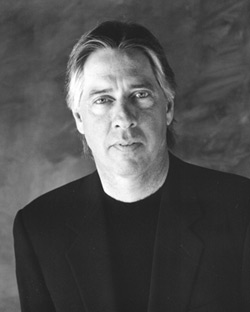 CS: We said this was a very busy year for you, anyway did you find some time to watch any movies and hearing any good score?
CS: We said this was a very busy year for you, anyway did you find some time to watch any movies and hearing any good score?
AS: I don’t see enough movies to kind of have any wordy opinion. For me writing music for movies is very experiential, dynamic… Having done it for so long I know something about what every composer is facing when they go to score films. The different kinds of expectations on composers from the people they work for are so varied and so complicated that to comments on other people’s work is really not relevant for me. We are all trying to do the best we can in the conditions we are working and I admire everybody who can get their music on a film.
CS: You’ve just launched your official site. What about it?
AS: We thought that it might be useful for us to start to have more contact with an internet presence. Emile [Brinkman, webmaster of the Alan Silvestri Unofficial Site] has done amazing things for so long, we love what he does, that is the quintessential fansite, which is fantastic. We were looking for something a little more from the point of view of servicing potential clients. Dave [Bifano, Silvestri’s assistant, musical coordinator and associate producer] has done a great job of gathering little film clips so that a potential client could have a very quick tour of what it is I do. All such things like these: news, any kind of notifications… Just a strict informational site.
On your agenda there is now The A-Team. Are you already working on this and - the big question - are you going to use the original Mike Post-Pete Carpenter television theme?
I haven’t started to work on the film yet. I had a couple of meeting with the director that’s getting along very very well. But I had not really sat down and started to begin the real work on the film, so we have to see where all of that leads.
Very special thanks to Alan and Sandra Silvestri and David Bifano.